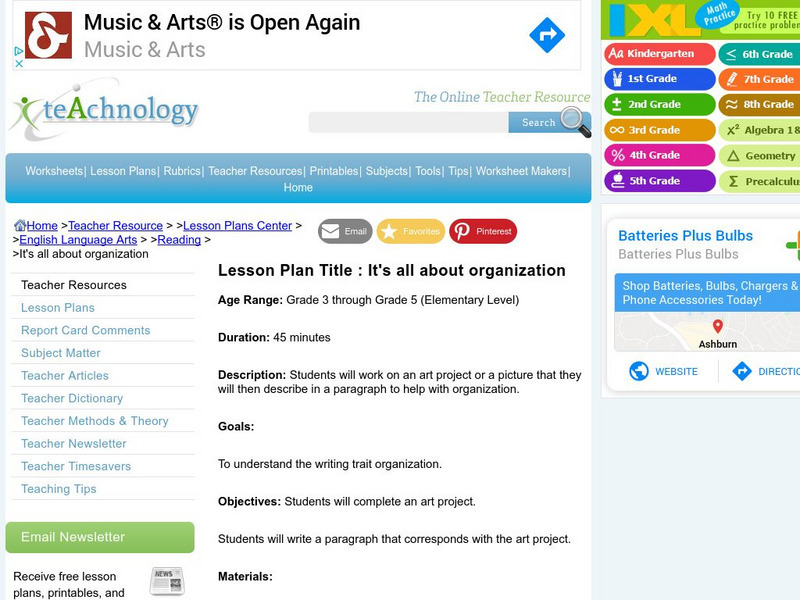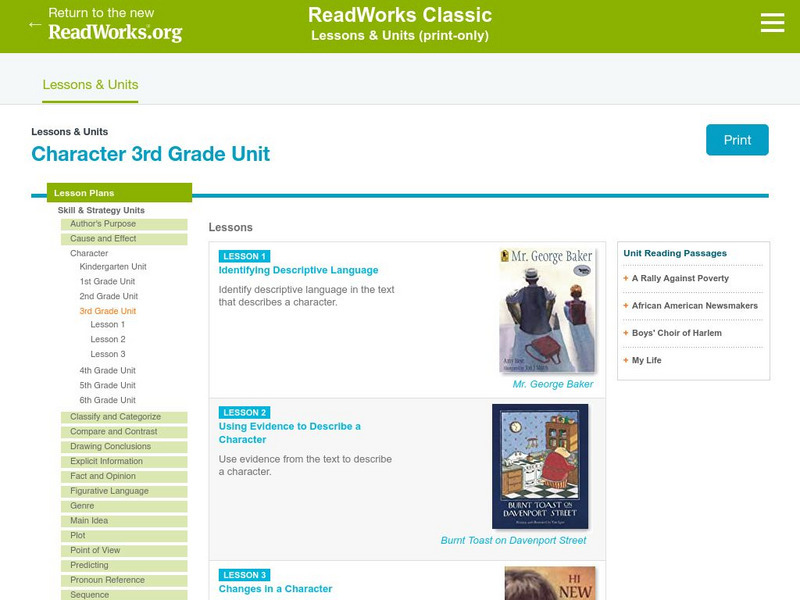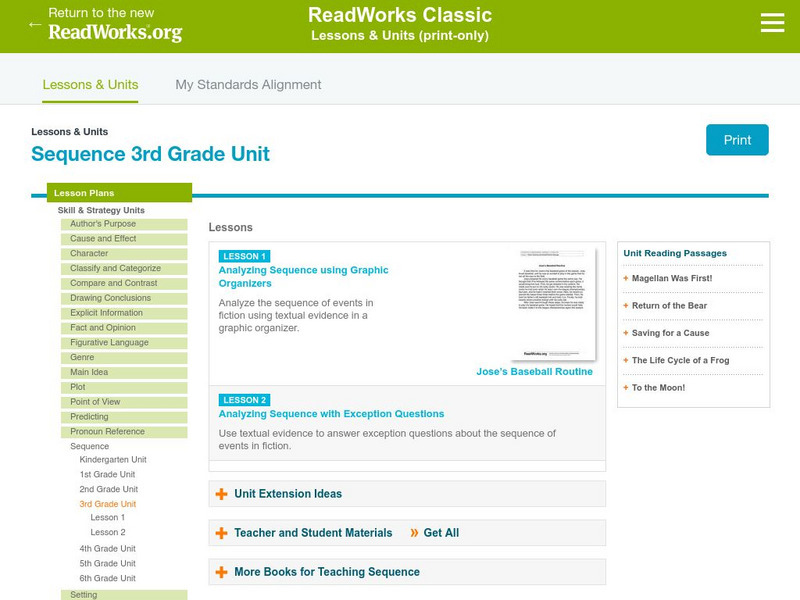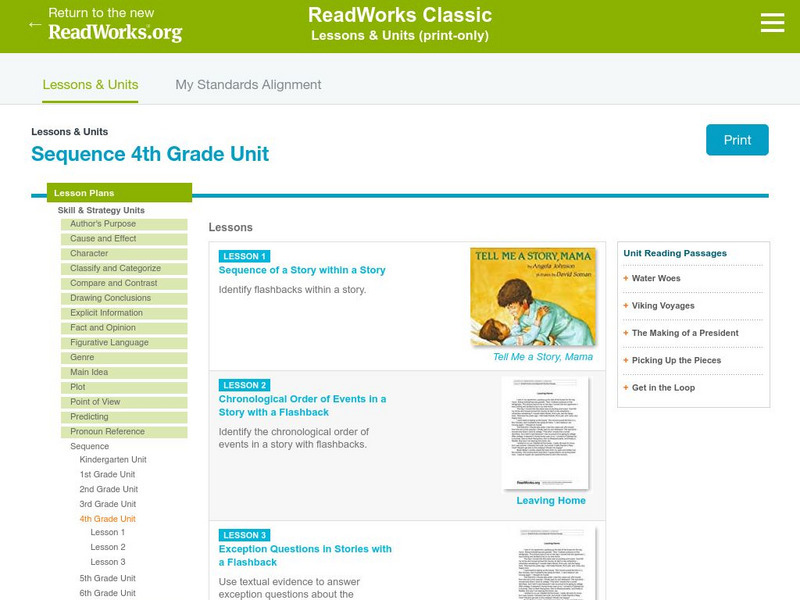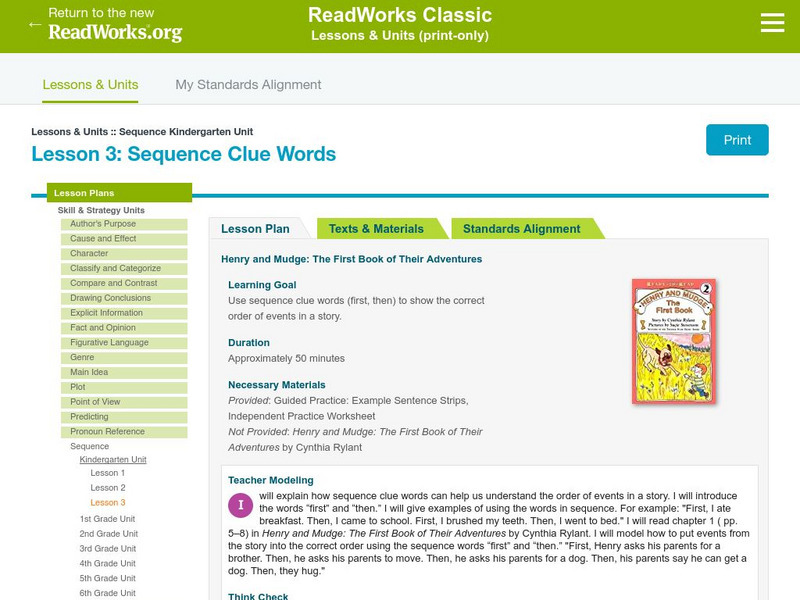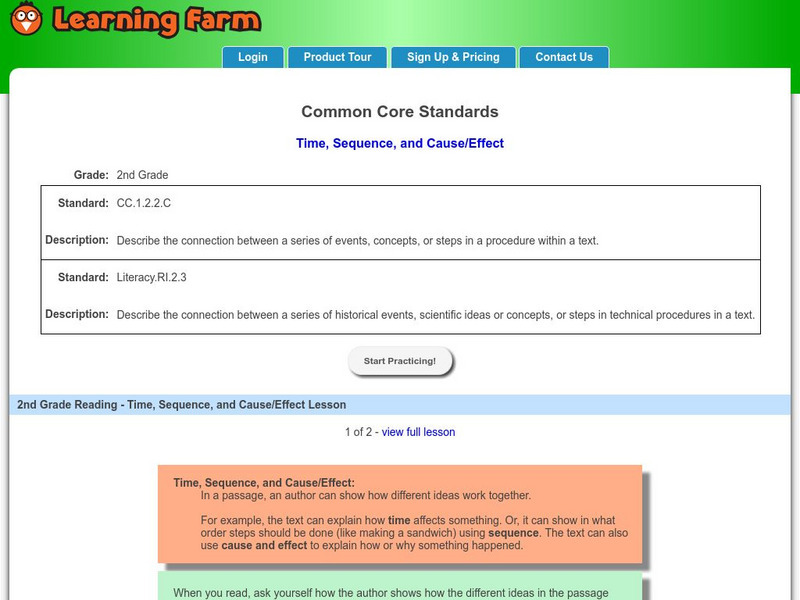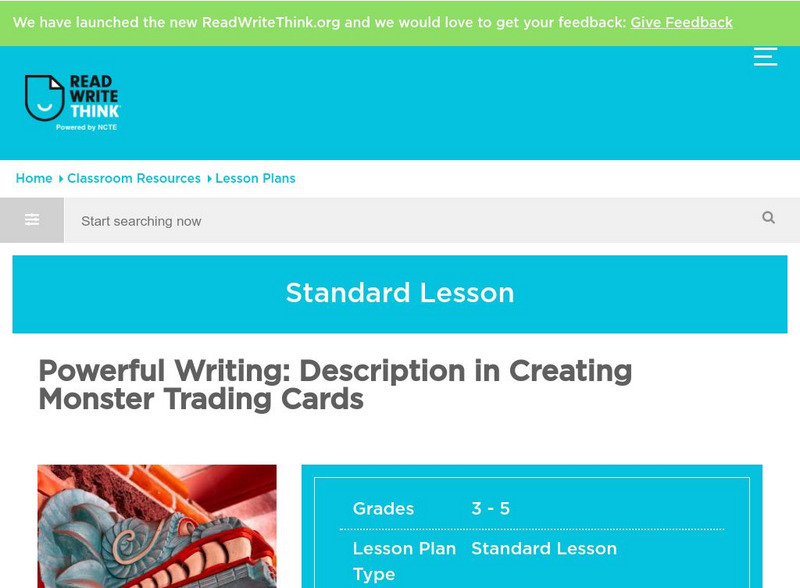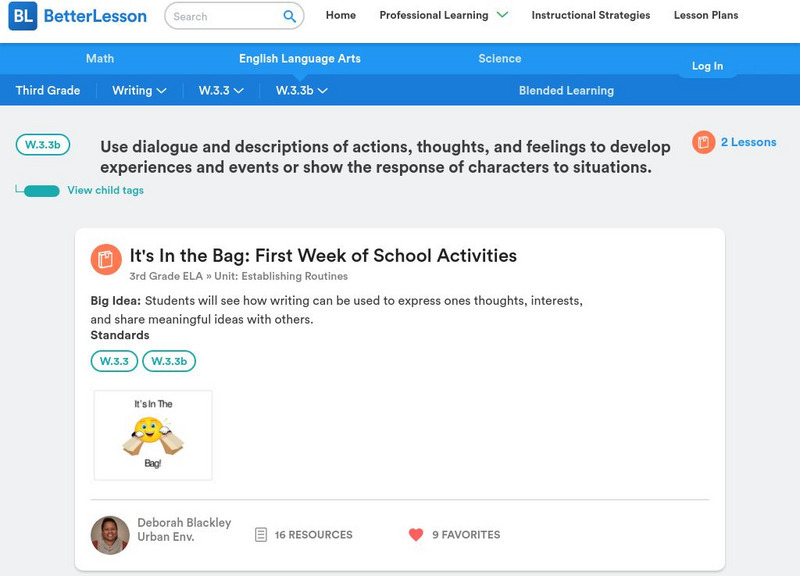Hi, what do you want to do?
Quia
Quia: Doing the Dishes
In this game, students are to read all nine steps to making homemade pizza and then number them in chronological order to reveal a hidden picture. Java is required.
ReadWriteThink
Read Write Think: Technical Reading and Writing Using Board Games
Contains plans for a game that helps teach technical reading and writing while reviewing a novel that learners have read. In addition to objectives and standards, this instructional plan contains links to sites used in the lessons as...
ReadWriteThink
Read Write Think: Using Science Texts to Teach the Organization of Nonfiction
Contains plans for three lessons that use science textbooks to teach about the organizational features of nonfiction such as labels, captions, headings, and fonts. In addition to objectives and standards, this instructional plan contains...
ReadWriteThink
Read Write Think: Sequencing a Strategy to Succeed at Reading Comprehension
Contains plans for lessons that use the story of Paul Bunyan to teach about sequencing and order of events. In addition to objectives and standards, this instructional plan contains links to sites used in the lessons as well as...
Quia
Quia: Sequence: Putting Things in Order
Using clue words, students are asked to number a list of events in order from 1-10 and then check answers. Students have up to three attempts to solve.
Austin Independent School District
Austin Independent School District: Summary of Fiction and Nonfiction Text [Pdf]
This 31-page document focuses on teaching summarizing strategies for use with fiction and nonfiction texts. This series of lesson plans starts with fiction summarizing strategies such as "Somebody-Wanted-But-So-Then" and "Story Arch."...
Austin Independent School District
Austin Independent School District: A Taxonomy of Literary Genre [Pdf]
A series of graphic organizers shows the progression of learning about literary genre, beginning in kindergarten and building through to fifth grade.
University of South Florida
Fcat Express: Cause & Effect Tree
Strategy to help students recognize cause and effect relationships provided by a standardized test preparation site intended for fourth grade. Includes simple instructions and a visual.
Houghton Mifflin Harcourt
Harcourt: School Publishers: Test Tutor: Sequence
Students will increase their reading comprehension skills and understanding of story sequence by reading a passage of text and then answering questions about the order of events.
Teachnology
Teachnology: Lesson Plan: It's All About Organization
In this lesson plan, third through fifth graders learn to organize their writing to form a cohesive paragraph. They began by making an art project such as a drawing; then they write sentences describing their art, and write an organized...
TES Global
Blendspace: Cause and Effect
This eleven-part Blendspace is designed to be used while teaching students how to analyze cause and effect. Links include reference sheets, a SMART Notebook Lesson, posters, practice worksheets, and guided practice opportunities.
E Reading Worksheets
E Reading Worksheets: Story Structure Activities
This learning module provides remediation and extra practice with analyzing story structures. Reinforcement for story structures is provided through the two PowerPoint lessons, three quizzes, and four different worksheets.
Read Works
Read Works: How to Have an Adventure
[Free Registration/Login Required] A literary text about a boy named Kurt and his adventure with bees. A question sheet is available to help students build skills in reading comprehension.
Read Works
Read Works: Starting Over
[Free Registration/Login Required] Students read about rebuilding after a disaster. A question sheet is available to help students build skills in comparing and contrasting.
ABCya
Ab Cya: Make a Robot
Kids will enjoy engaging in this interactive to build a virtual robot. Extend the activity by printing out the creation and incorporating language arts as students write a descriptive story about their new robotic friend or an expository...
Read Works
Read Works: Character 3rd Grade Unit
[Free Registration/Login Required] In this three-lesson unit, students learn how to identify language within a text that describes a character, use evidence from a text to describe a character, and to use details from a text to identify...
Read Works
Read Works: Sequence 3rd Grade Unit
[Free Registration/Login Required] This website provides a series of two lesson plans designed to teach learners to create a graphic organizer showing the sequence of events in a fiction text. The lessons include ideas for direct...
Annenberg Foundation
Annenberg Learner: Sequence
Listen to an explanation about the series of events in Cinderella. Then look at some pictures where the story's events are all mixed up and put them in the correct order.
Read Works
Read Works: Fourth Grade: Three Lesson Unit: Sequence
[Free Registration/Login Required] A three-lesson unit on sequencing where learners use book Tell Me a Story, Mama by Angela Johnson to identify flashbacks and the text "Leaving Home" to arrange details into chronological order for a...
Read Works
Read Works: Sequence Kindergarten Unit: Sequence Clue Words
[Free Registration/Login Required] Teach students to identify the sequence of a story by looking at transitional words such as "first" and "then" in the book Henry and Mudge: The First Book of Their Adventures by Cynthia Rylant. Learning...
Learning Farm
Learning Farm: Ccs: Time, Sequence, and Cause/effect
An automated lesson will engage student's learning how to describe the connection between a series of historical events, scientific ideas or concepts, or steps in technical procedures in a text. An introduction to the concept precedes a...
ReadWriteThink
Read Write Think: Powerful Writing Description in Creating Monster Trading Cards
Contains plans for two lessons that teach about descriptive writing by asking students to create their own monster trading cards with vivid descriptions. In addition to objectives and standards, this instructional plan contains links to...
Quizlet
Quizlet: Story Elements (1St Grade) Match
This interactive game of "Match" assesses students' knowledge of story element definitions. Students will match the correct definition of a story element to its corresponding definition. Picture cues are provided on this review resource.
Better Lesson
Better Lesson: W.3.3.b: Use Dialogue and Descriptions of Actions
Links to 2 lessons and activities that build student skills in standard W.3.3.b: Write Narratives to develop real or imagined experiences or events using effective technique, descriptive details, and clear event sequences.





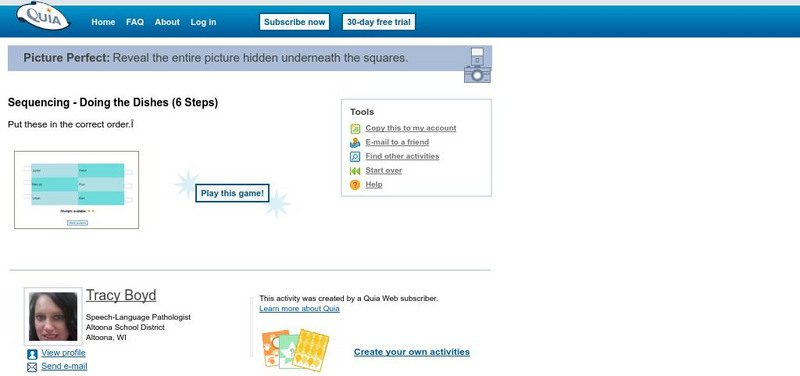


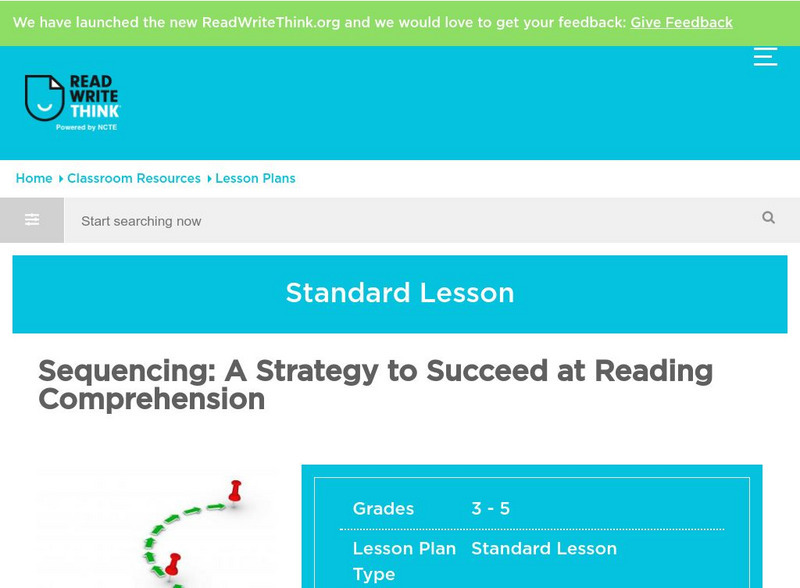
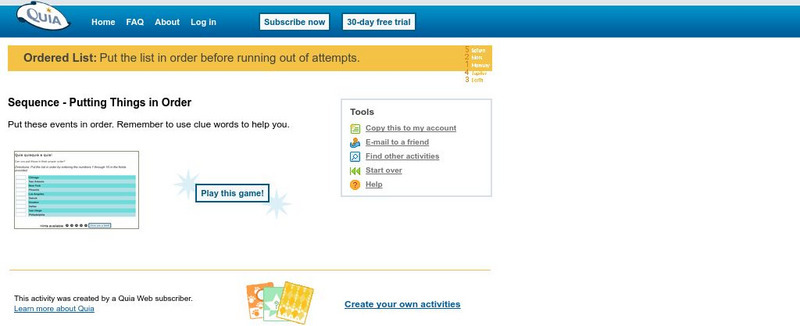
![Austin Independent School District: Summary of Fiction and Nonfiction Text [Pdf] Professional Doc Austin Independent School District: Summary of Fiction and Nonfiction Text [Pdf] Professional Doc](https://static.lp.lexp.cloud/images/attachment_defaults/resource/large/FPO-knovation.png)


